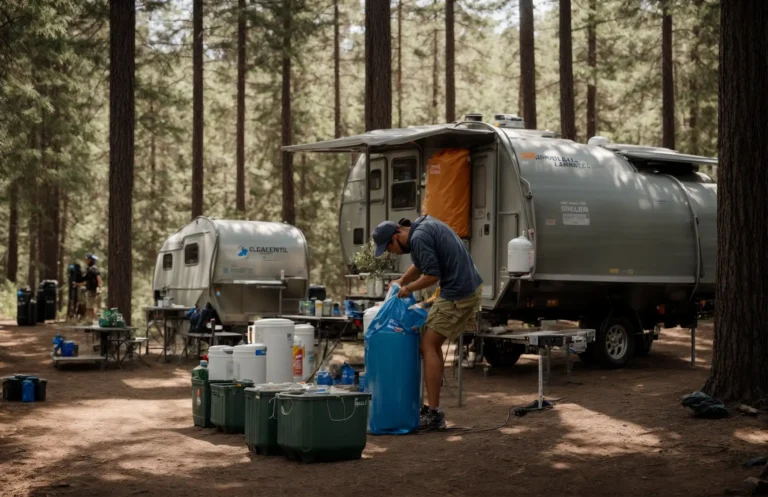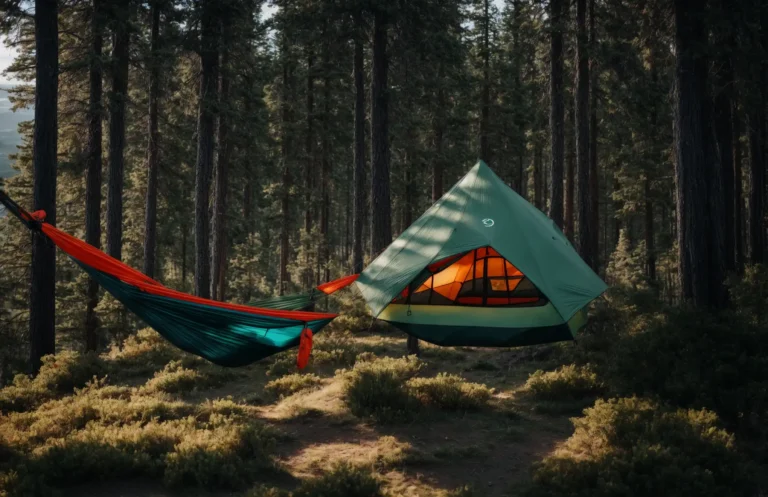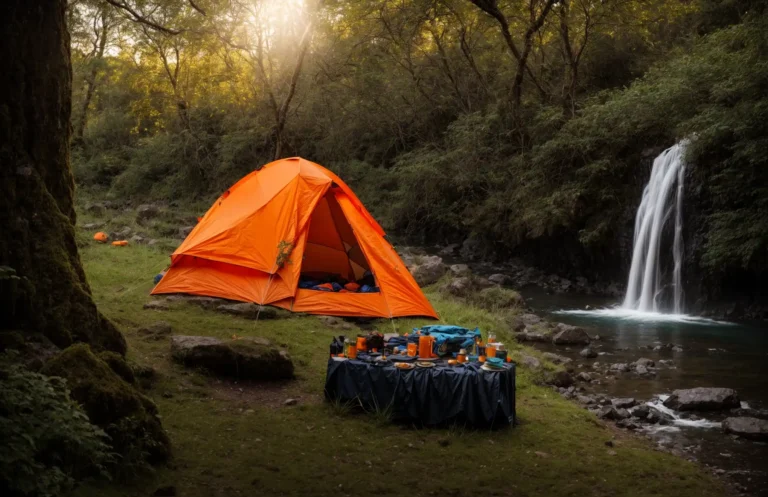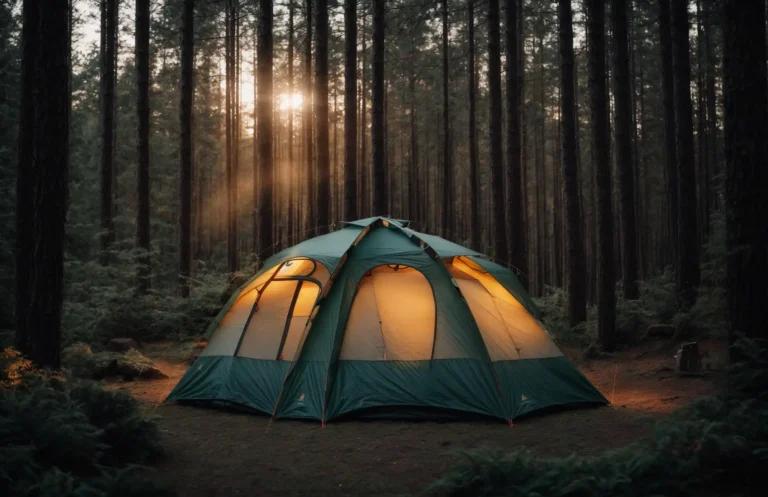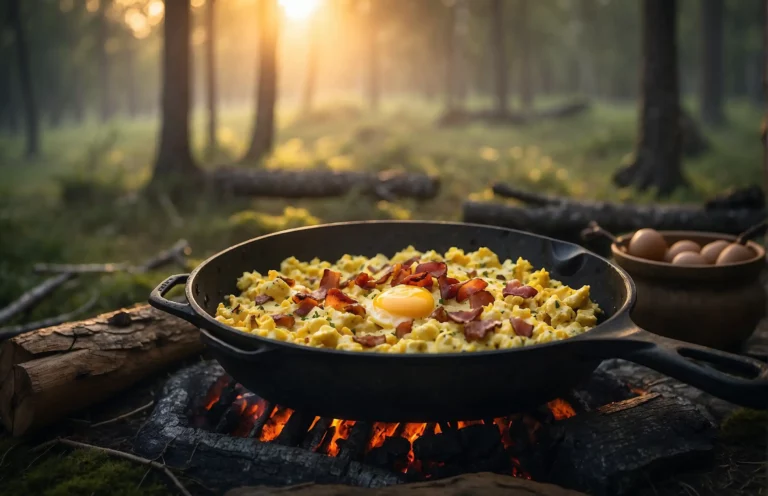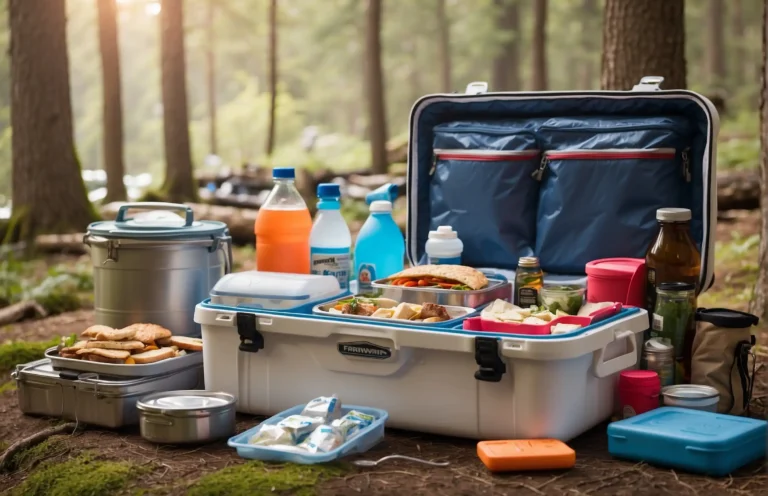Bring 1 gallon of water per person per day for drinking and cooking while camping. Adjust the amount based on activity level, weather, and trip duration.
Planning a camping trip requires careful consideration of water needs to stay hydrated and healthy in the great outdoors. Water is essential not only for drinking but also for cooking and cleaning. Depending on the availability of water sources near your campsite and your intended activities, such as hiking or campfires, your water requirements may vary.
Remember to pack enough for the entire duration of your journey to avoid dehydration, which can quickly diminish your energy levels and overall experience. Choosing reusable water containers can be environmentally friendly and cost-effective. Always be prepared to treat natural water sources to prevent illness, ensuring a safe and enjoyable camping adventure.
The Basics of Water Needs
Planning a camping trip entails more than just plotting a course or packing a sleeping bag. One essential yet often overlooked aspect is hydrating properly. To guarantee an enjoyable and safe outdoor adventure, understanding the basics of water needs is crucial. This not only applies to avoiding dehydration but also in preventing waterborne illnesses by ensuring your supply is clean and abundant. Let’s dive into what hydration really means for campers.
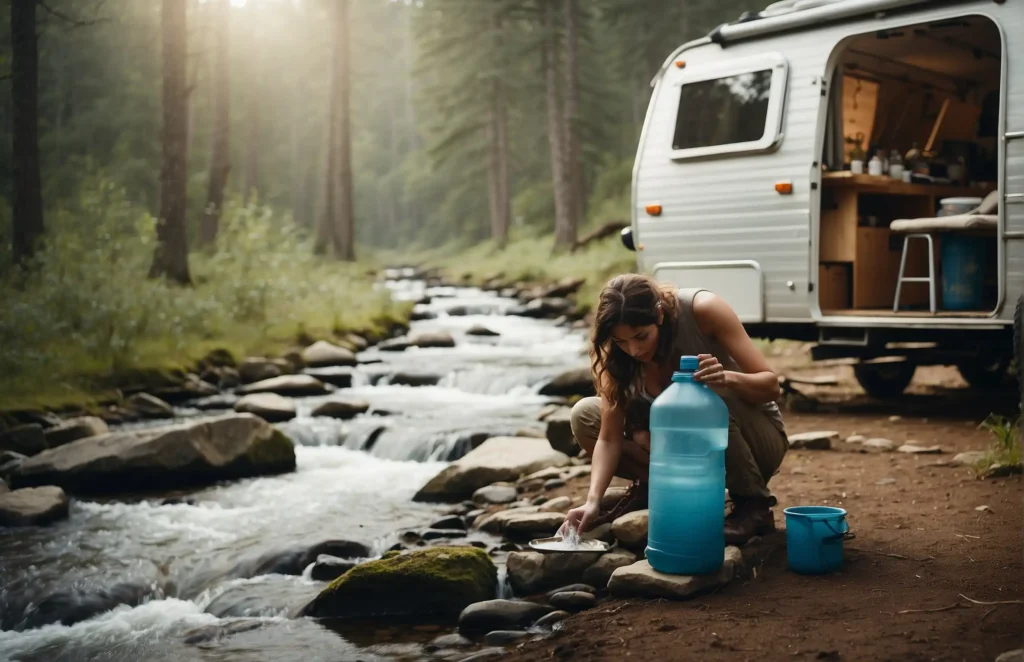
Hydration plays a pivotal role in maintaining optimal health, especially during physically demanding activities like camping. Water aids in temperature regulation, joint lubrication, and nutrient transportation. Without adequate fluid intake, your body cannot perform at its best, leading to fatigue, disorientation, and in extreme cases, life-threatening conditions.
Daily water needs vary widely, but as a general rule, an average adult requires approximately 2 liters (about half a gallon) per day under normal circumstances. However, this rate escalates with activity level, climate, altitude, and individual health factors. During a typical day of camping, where moderate physical exertion is expected, this can easily double.
Water needs are uniquely personal and impacted by several variables. Below is a list of common factors to consider:
- Activity Level: Vigorous activities increase perspiration, upping fluid needs.
- Environmental Conditions: Humidity, temperature, and altitude affect hydration.
- Health Conditions: Certain illnesses or health conditions warrant more water.
- Diet: Foods high in salt, protein, and fiber may boost thirst.
- Age and Body Composition: Different age groups and body types have distinct hydration requirements.
Adjust your water supply accordingly to safeguard your health and enhance your camping experience.
Pre-trip Planning: How Much Water To Pack
Embarking on a camping trip ignites the spirit of adventure, but before you leap into the wilderness, one essential question remains at the forefront: how much water should you bring? Proper hydration is critical, and calculating the right amount of water to pack can be the difference between a successful outing and a parched predicament. Read on to discover the secrets to staying sufficiently hydrated under the stars.
Calculating Water Supply Per Day
A cornerstone of camping prep involves estimating your daily water needs. As a general guideline, outdoor enthusiasts should plan for approximately 2 liters (about 0.5 gallons) of water per person per day for drinking purposes. This estimate scales up with exertion, heat, and altitude. For cooking and hygiene, factor in an additional 1 to 2 liters daily. When calculating, always round up to err on the side of caution.
| Activity | Additional Daily Water (L) |
|---|---|
| Basic Cooking | 1 |
| Personal Hygiene | 1-2 |
| High-Effort Activities | 2+ |
The Role of Trip Duration and Weather
The length of your camping trip and the predicted weather conditions play a pivotal role in water planning. Double-check the forecast leading up to departure and adjust your water stock to counteract dehydration risks associated with extreme heat or arid environments. As trip duration extends, the cumulative need for water significantly increases; always include a surplus for emergencies.
- Short trip (1-2 days): Stick to the basic recommendations.
- Extended trip: Consider replenishing strategies such as water purification tools or natural water sources.
- Hot/ Dry Conditions: Increase daily water intake by 1 liter or more.
Additional Considerations for Group Size and Activity Level
Group dynamics and planned activities heavily influence your water supply. For larger groups, calculate individual needs and add a communal buffer. Meticulous attention to the group’s overall activity level is crucial; high-energy adventures like hiking or biking necessitate additional hydration. Pack accordingly, and never underestimate the impact of group size and exertion on your water demands.
- Determine baseline water needs per person.
- Add a group buffer (10-20% more water).
- Adjust for activities: High activity levels require more water.
Sources of Water While Camping: Beyond the Water Bottle
Embarking on a camping adventure sparks excitement about connecting with nature and testing survival skills. It requires careful planning, particularly when addressing hydration needs—where the standard water bottle strategy may not suffice. Understanding the sources of water while camping, beyond what can be carried in bottles, is essential for any outdoor enthusiast. Let’s delve into the considerations of using natural resources, methods for purifying water found in the wild, and strategies for managing the weight of your water supply.
Natural Water Sources: Safety and Accessibility
Finding water in the backcountry isn’t as straightforward as turning on a tap. Natural water sources such as streams, rivers, lakes, and springs are common in many camping areas. Consider the following when accessing these sources:
- Proximity: Camp near a water source but maintain a responsible distance to protect both the ecosystem and your camp from potential flooding.
- Visibility: Ensure the water source is clear of algae and excessive sediment, which can indicate poor quality.
- Flow: Opt for flowing water over stagnant, as it’s more likely to be free of bacteria and parasites.
Water Purification Methods in the Wild
Even the clearest stream can harbor unseen pathogens. Purifying natural water is vital for safe consumption. Several methods for treating water include:
- Boiling: A reliable way to kill bacteria and viruses. Aim for a rolling boil for at least one minute (longer at higher altitudes).
- Chemical Purifiers: Tablets or drops such as iodine or chlorine dioxide can disinfect water, but require a waiting period before drinking.
- UV Light Purifiers: Portable devices that use ultraviolet light to neutralize microbes, effective but dependent on battery life.
- Filter Systems: Physical filters remove bacteria and protozoa. Some combine with chemical elements to improve effectiveness against viruses as well.
Carrying Capacity: Balancing Need and Weight
| Trail Time | Weight (ml/kg) | Volume (Liters/Person) |
|---|---|---|
| Half-Day Hike | 30 | 1.5 |
| Full-Day Hike | 60 | 3 |
| Multi-Day Trek | Variable | Depends on access to natural sources |
Calculating how much water to bring on a camping trip can be tricky. One must balance the need for hydration with the weight of carrying it. As a rule of thumb, carry enough to reach your next reliable water source. Utilize lightweight, durable containers and distribute weight evenly across your pack. When planning, factor in climate, elevation, physical exertion, and individual hydration needs.
Hydration Gear and Technology
Ensuring you stay hydrated while camping is a non-negotiable aspect of outdoor adventure. With the evolution of hydration gear and technology, access to clean water is easier than ever. Whether tackling a rugged trail or setting up camp at a remote site, an array of innovative solutions are at your disposal to meet your hydration needs efficiently.Innovations in Portable Water Filtration
Innovations in Portable Water Filtration
Portable water filtration systems have revolutionized the way campers drink water in the wild. These cutting-edge devices can turn a murky pond or a flowing stream into a safe water source. Here’s what’s trending in water filtration:
- Ultra-light filters: Compact and easy to carry, they ensure you aren’t weighed down on the trail.
- UV purifiers: Using ultraviolet light, these purifiers eradicate nearly all microbiological contaminants without altering the taste.
- Pump filters: For high-volume needs, pump filters work quickly to provide clean water for your entire camp.
Each of these systems employs a different technology to keep you safe and hydrated, ensuring your adventures are never cut short by water-borne illnesses.Choosing the Right Water Containers
Choosing the Right Water Containers
Selecting the appropriate water container is crucial for any camping trip. Consider the following factors:
- Material: Stainless steel offers durability while plastics like BPA-free Tritan are light and shatter-resistant.
- Size: Match the container size to the length of your trip and the size of your group.
- Insulation: Insulated containers keep water cool in hot environments.
Durability, weight, and insulation are key when choosing your water containers.Hydration Packs vs. Water Bottles: Pros and Cons
Hydration Packs vs. Water Bottles: Pros and Cons
| Hydration Gear | Pros | Cons |
|---|---|---|
| Hydration Packs | Convenient hands-free useHigher capacityEasy to carry over long distances | Can be more expensiveDifficult to cleanHeavier when full |
| Water Bottles | Simple to use and cleanMore affordableGenerally lighter | Less convenient for hands-free hydrationLower capacityMay require frequent refills |
Weigh the pros and cons of hydration packs and water bottles against your needs to choose the best option for your trip. Your selection should align with your planned activities, the duration of your trip, and your personal preferences for convenience and ease of use.
Also learn: How to Keep Bedding Dry When Camping
Conservation and Best Practices in the Great Outdoors
Embracing the wilderness on a camping trip means becoming a steward of the environment. An essential aspect of this stewardship is the mindful use of water. While it’s crucial to stay hydrated and maintain personal hygiene, conserving water is equally important to minimize the environmental impact and ensure there is enough to last the entire trip. Here, we explore how to manage water consumption effectively while camping, ensuring that engaging with nature is done sustainably and responsibly.
Minimizing Water Waste: Tips and Tricks
- Measure Usage: Precisely measure water for cooking to avoid unnecessary waste.
- Leakproof Containers: Ensure all water containers are leakproof to prevent loss.
- Eco-Friendly Products: Use biodegradable soaps to minimize water contamination.
- Reuse Water: Reuse cooking water for cleaning up or put out campfires.
To further reduce water waste, campers can opt for water-saving techniques such as using a spray bottle for cleaning dishes or opting for a damp cloth instead of a full wash. Also, consider investing in a portable water filter or purifier, allowing the use of natural water sources without depleting your reserves.
Environmental Considerations and Ethics of Water Usage
The mantra ‘Leave No Trace’ is central to the ethical use of water outdoors. Campers must understand that all water sources are part of a larger ecosystem that supports wildlife and vegetation. By following these guidelines, campers can ensure that water sources are protected:
- Avoid Contamination: Keep soaps and waste away from streams and lakes.
- Respect Wildlife: Do not interrupt water access for local fauna.
- Natural Balance: Use existing trails to prevent erosion near water sources.
Employing environmentally friendly practices such as these help maintain the natural balance of the ecosystems we enjoy while camping.
Emergency Situations: Rationing and Seeking Water
| Scenario | Action |
|---|---|
| Low on Water | Immediately begin rationing and prioritize water usage for hydration over other activities. |
| Seeking Water Sources | Look for streams, rivers, or lakes and use a water purification method before consumption. |
In unforeseen circumstances where your water supply runs low, it’s vital to know how to ration effectively and locate fresh water sources. Ideally, campers should always be equipped with a map indicating local water sources and carry a method to purify water. Proper planning and preparedness are key to handling water-related emergencies in the wilderness.
Rationing is a crucial skill in such situations, focusing on maintaining hydration over other needs such as washing. It’s prudent always to have a backup plan in case your main water supply becomes compromised.
The blog post encourages responsible water usage while camping. It provides actionable conservation tips and emphasizes ethical interactions with the environment, ensuring readers are prepared even in emergency situations.
Conclusion
Proper hydration is vital on any camping trip. Packing enough water ensures safety and enjoyment. Aim for at least half a gallon per person, per day. Adjust for activity level and weather. Remember to consider water sources along your route.
Stay safe and hydrated on your adventure! Ready for your next outdoor adventure? Swing by the Learning section at Outdoor Awaits for the best camping guides around.

